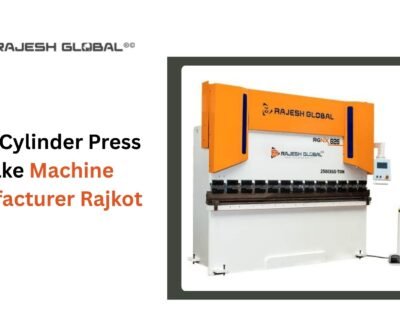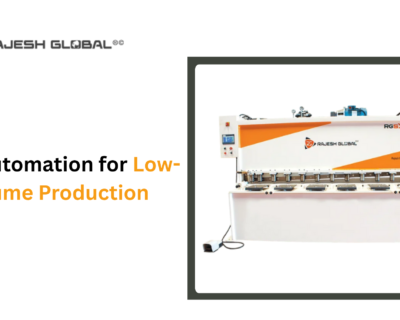Blog

Single-Axis vs. Multi-Axis CNC Machines
As regards to manufacturing, Computer Numerical Control (CNC) machines stand out as a cornerstone of precision and efficiency. The knowledge of the distinctions between single-axis and multi-axis CNC machines is crucial for budding machinists. This understanding enhances one’s machining skills and facilitates in deciding which equipment will suit the best for their projects.
In this article, we will delve into the characteristics, advantages, and applications of both types of CNC machines, guiding you through the intricacies of these remarkable tools.
Understanding CNC Machines
Contents
CNC machines are automated tools that utilize programmed commands to control machinery operations, enabling the production of intricate parts with high precision. The capabilities of these machines are dictated by their axes—essentially the directions in which they can move. While there are various configurations available, the most common types include single-axis machines, which typically operate along one linear axis, and multi-axis machines that can maneuver along multiple axes simultaneously.
Single-Axis CNC Machines
Single-axis CNC machines are designed for simplicity and ease of use. These machines typically operate along one primary axis—either the X or Y axis—allowing for straightforward machining tasks. They are particularly well-suited for operations that do not require complex geometries or detailed features.
Advantages of Single-Axis Machines
One of the most significant benefits of single-axis CNC machines is their user-friendliness. For beginners, these machines offer a gentle introduction to CNC machining without overwhelming complexity. They are generally more affordable than their multi-axis counterparts, making them an attractive option for small-scale operations.
Single-axis machines excel in specific applications such as drilling holes or making simple cuts. They provide quick setup times and require less training to operate effectively. This makes them ideal for enthusiasts looking to gain hands-on experience without a steep learning curve.
Multi-Axis CNC Machines
In contrast, multi-axis CNC machines incorporate additional axes beyond the standard three (X, Y, Z). These can include rotary axes (A and B), allowing for more complex movements and enabling the creation of intricate designs that would be challenging or impossible with a single-axis machine.
Advantages of Multi-Axis Machines
The advantages of multi-axis CNC machining are numerous and compelling:
- Increased Precision: Multi-axis machines allow for simultaneous movement along different axes, resulting in greater accuracy and precision when machining complex parts. Multi-axis CNC machining expands the capabilities of CNC machining by introducing additional rotational axes, enabling manufacturers to achieve intricate features that traditional methods cannot replicate.
- Reduced Setup Time: One of the standout benefits is the reduction in setup time. Multi-axis machines can access multiple sides and angles without requiring manual repositioning of the workpiece. This streamlining leads to shorter cycle times and enhanced productivity. A study revealed that using a 5-axis machine resulted in a 26.6% reduction in cycle time compared to a 3-axis machine due to fewer setups required.
- Complex Part Geometries: Multi-axis machining opens up new possibilities in manufacturing complex geometries and curved surfaces. This capability is particularly advantageous in industries such as aerospace and automotive, where precision is paramount. The ability to machine undercuts and hard-to-reach areas further enhances the versatility of these machines.
- Improved Surface Finish: The continuous movement along multiple axes minimizes machining marks and tool chatter, resulting in superior surface finishes on machined parts. This quality is essential for applications where aesthetics and functionality are equally important.
Key Differences Between Single-Axis and Multi-Axis CNC Machines
When comparing single-axis and multi-axis CNC machines, several key differences emerge:
| Feature | Single-Axis CNC Machines | Multi-Axis CNC Machines |
| Movement | Limited to one axis | Multiple axes (3 to more) |
| Complexity | Simple operations | Complex geometries |
| Precision | Lower | Higher |
| Setup Time | Quick setup | Longer setup |
| Cost | Generally less expensive | Higher initial investment |
Choosing the Right Machine for Your Needs
Selecting the appropriate CNC machine depends on various factors:
- Type of Projects: If your projects involve straightforward tasks such as drilling or cutting basic shapes, a single-axis machine may suffice. However, if you aspire to tackle more complex designs or intricate parts, investing in a multi-axis machine will be beneficial.
- Budget Constraints: Single-axis machines typically come at a lower price point, making them accessible for beginners or those with limited budgets. Conversely, multi-axis machines require a higher initial investment but offer long-term savings through increased efficiency.
- Future Scalability: Consider your future plans when choosing a machine. If you anticipate taking on more complex projects as your skills develop, opting for a multi-axis machine may provide better value over time.
Conclusion
Understanding the differences between single-axis and multi-axis CNC machines is vital for anyone passionate about machining. While single-axis machines offer simplicity and affordability for beginners, multi-axis machines provide advanced capabilities that enable intricate designs and improved efficiency.
At Rajesh Machine Tools, we recognize the importance of equipping enthusiasts with the knowledge they need to succeed in their machining endeavors. Whether you’re just starting or looking to expand your capabilities, our range of high-quality CNC machinery caters to various needs and budgets.







